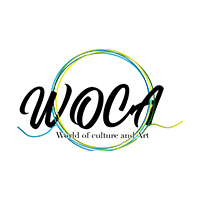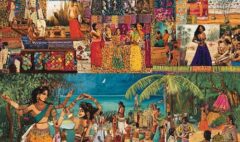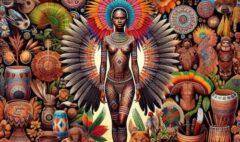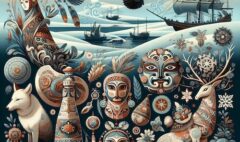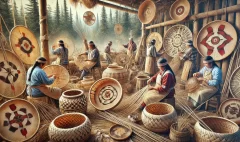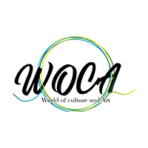The Captivating World of New Zealand Indigenous Arts
The Captivating World of New Zealand Indigenous Arts
New Zealand’s indigenous arts, deeply rooted in Māori culture, offer a fascinating glimpse into a rich and vibrant tradition that has endured for centuries. As an expert in Māori art and culture, I’m excited to guide you through the diverse and meaningful world of New Zealand’s indigenous arts. From intricate carvings to powerful performances, these art forms not only showcase incredible skill and creativity but also serve as a living connection to ancestral knowledge and cultural identity.
The Origins of New Zealand Indigenous Arts
The story of New Zealand indigenous arts begins with the arrival of the Māori people to Aotearoa (the Māori name for New Zealand) over 700 years ago. Bringing with them artistic traditions from their Polynesian homeland, the Māori quickly adapted their practices to the new environment and materials they found. Over time, these art forms evolved into the distinctive styles we recognize today, each deeply imbued with cultural significance and spiritual meaning.
Whakairo: The Art of Carving
One of the most prominent forms of New Zealand indigenous arts is whakairo, or Māori carving. This intricate art form can be seen in everything from small personal adornments to massive architectural structures. Traditionally carved in wood, bone, or stone, whakairo often depicts ancestors, mythological figures, and important tribal histories. The swirling patterns and stylized figures characteristic of Māori carving are not just decorative but also serve as a form of visual storytelling, preserving and communicating cultural knowledge.
Master carvers, known as tohunga whakairo, undergo years of training to perfect their craft. Their work can be seen in marae (meeting grounds), where elaborately carved meeting houses serve as the heart of Māori communities. These structures are living embodiments of tribal history and identity, with every carving holding deep significance for the people it represents.
Tā Moko: The Sacred Art of Tattoo
Tā moko, the traditional Māori tattoo art, is another significant aspect of New Zealand indigenous arts. Unlike tattoos in many other cultures, tā moko is not simply decorative but serves as a visual representation of an individual’s genealogy, social status, and personal achievements. Traditionally applied using chisels made from albatross bone, modern tā moko artists may use contemporary tattooing methods while still adhering to traditional designs and cultural protocols.
The revival of tā moko in recent decades has been a powerful symbol of cultural reclamation and pride for many Māori. This resurgence of New Zealand indigenous arts has seen tā moko embraced not only as a personal adornment but also as a statement of cultural identity and connection to ancestral traditions.
Weaving: Crafting Connection Through Fiber
Weaving holds a special place in New Zealand indigenous arts, with a rich tradition of creating both practical and ceremonial items. Māori weavers, predominantly women, work with native fibers such as harakeke (New Zealand flax) to create kete (baskets), whāriki (mats), and korowai (cloaks). These woven items are not just functional objects but also carry deep cultural significance, often being passed down through generations as treasured heirlooms.
The art of weaving in Māori culture goes beyond the physical act of creating an object. It’s a holistic practice that involves a deep understanding of the natural world, sustainable harvesting practices, and the passing down of ancestral knowledge. Many contemporary Māori weavers are working to revive traditional techniques and patterns, ensuring that this vital aspect of New Zealand indigenous arts continues to thrive.
Performing Arts: Bringing Tradition to Life
The performing arts play a crucial role in New Zealand indigenous arts, serving as a dynamic way to express cultural identity and pass down traditional knowledge. Kapa haka, a form of traditional Māori performing arts, combines powerful vocals, expressive dance, and dramatic gestures to tell stories, express emotions, and showcase cultural pride. These performances are not just entertainment but also a way of keeping oral traditions alive and connecting younger generations to their cultural heritage.
Another important aspect of Māori performing arts is waiata, or song. Waiata range from ancient chants to contemporary compositions, each serving different purposes such as welcoming guests, mourning the dead, or celebrating achievements. The power of the human voice in Māori culture cannot be overstated, with waiata being an integral part of both everyday life and formal ceremonies.
Contemporary Expressions of New Zealand Indigenous Arts
While deeply rooted in tradition, New Zealand indigenous arts are far from static. Contemporary Māori artists are finding innovative ways to express their cultural identity through modern mediums and techniques. From paintings and sculptures that blend traditional motifs with contemporary styles to digital art and film that explore Māori themes, these artists are ensuring that New Zealand indigenous arts remain relevant and vibrant in the modern world.
Many contemporary Māori artists use their work as a platform for social commentary, addressing issues such as cultural appropriation, environmental conservation, and the ongoing effects of colonization. This blend of traditional knowledge and contemporary concerns demonstrates the dynamic nature of New Zealand indigenous arts and their continued importance in Māori culture and identity.
Preserving and Promoting New Zealand Indigenous Arts
Efforts to preserve and promote New Zealand indigenous arts are crucial for maintaining cultural heritage and supporting Māori artists. Many initiatives, such as arts education programs, cultural centers, and government-supported projects, work to ensure that traditional art forms are passed down to future generations while also providing opportunities for contemporary expressions.
The global recognition of New Zealand indigenous arts has grown significantly in recent years, with Māori artworks and performances gaining appreciation on the international stage. This increased visibility not only helps to promote Māori culture globally but also provides economic opportunities for artists and their communities.
Challenges and Opportunities
Despite their cultural significance and growing recognition, New Zealand indigenous arts face challenges such as the commodification of culture, the risk of losing traditional knowledge, and the need to balance cultural integrity with commercial viability. However, these challenges also present opportunities for innovation, cultural revitalization, and the development of new platforms for artistic expression.
Conclusion: A Living Tradition
New Zealand indigenous arts represent a living tradition that continues to evolve while maintaining deep connections to ancestral knowledge and cultural identity. From the intricate carvings of whakairo to the powerful performances of kapa haka, these art forms offer a window into the rich cultural heritage of the Māori people. As we appreciate and support New Zealand indigenous arts, we not only contribute to the preservation of invaluable cultural traditions but also help ensure that these vibrant artistic expressions continue to inspire and educate for generations to come.
